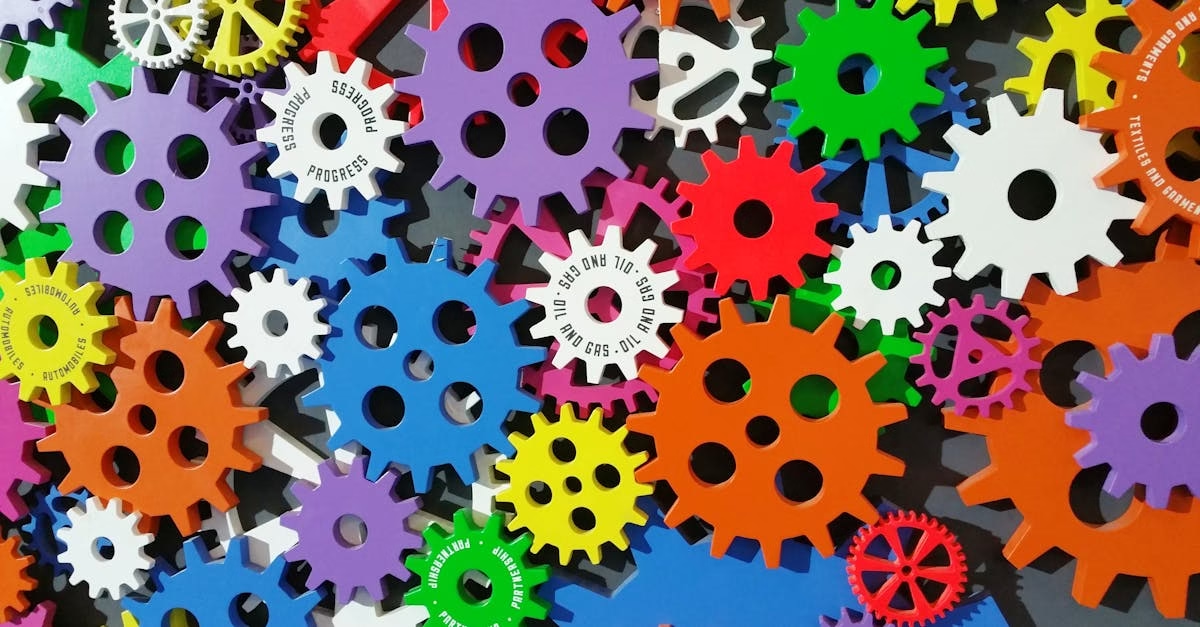What if AI could improve on its own—learn better, think smarter, and adapt like humans? Agentic AI is on the path to becoming more intelligent, helpful, and human-like every day.
Background
Agentic AI refers to artificial intelligence systems that can act independently, make decisions, plan ahead, and learn over time. Unlike regular AI, which follows simple instructions, Agentic AI has a goal, adapts to its environment, and improves with experience. But to be truly powerful, Agentic AI must keep evolving. The future of Agentic AI will not just depend on how we build it—it will also depend on how it can improve itself. This means learning better from data, managing its own memory, understanding people more deeply, and making smarter decisions. By exploring these 7 futuristic directions, we can see how Agentic AI will grow smarter, safer, and more capable. These directions will shape how Agentic AI interacts with the world, collaborates with humans, and becomes more trustworthy over time. Understanding these directions helps young minds imagine, design, and guide the future of intelligent machines.
7 Futuristic Directions for Agentic AI to Improve Itself
- Self-Learning Enhancement
- Adaptive Memory Systems
- Self-Aware Goal Alignment
- Emotional Intelligence Expansion
- Autonomous Self-Debugging
- Ethical Reasoning Upgrade
- Lifelong Learning Capabilities
1. Self-Learning Enhancement
What is this Direction?
This direction focuses on helping AI agents improve their ability to learn from new experiences without needing constant human supervision. It means agents will be able to fine-tune their own models, ask questions, and explore better ways to learn.
- AI learns new skills on its own
- Adapts faster to changing environments
- Uses trial-and-error like humans
Why is it Required?
Currently, most AI needs humans to give labeled data or correct it. That’s slow and expensive. Self-learning helps AI keep up with real-world changes and solve problems without waiting for instructions.
- Reduces need for constant training
- Makes AI more flexible and faster
- Saves time and human effort
How this Direction Will Improve Agentic AI:
In the future, Agentic AI will use techniques like reinforcement learning, self-supervised learning, and curiosity-driven exploration to keep improving. Agents will set their own learning tasks, test strategies, and analyze outcomes without humans always guiding them. For example, a drone may learn new flying paths after facing changing weather or obstacles. This allows the agent to become more independent and smarter over time.
- Builds AI agents that grow smarter through experience
- Reduces failure by improving learning efficiency
- Supports real-world problem-solving without constant updates
2. Adaptive Memory Systems
What is this Direction?
This direction focuses on making AI agents develop better memory—so they can remember, forget, and recall the right things at the right time, just like the human brain.
- Improves long-term and short-term memory
- Helps AI organize and manage large amounts of knowledge
- Uses smart filtering to avoid overload
Why is it Required?
Today’s AI struggles with remembering older conversations or learning from past events. Good memory is essential for reasoning, planning, and human-like interaction.
- Helps AI recall important facts
- Improves consistency in conversations
- Supports multi-step thinking
How this Direction Will Improve Agentic AI:
Agentic AI will soon use memory architectures inspired by the human brain—like episodic memory (events), semantic memory (facts), and working memory (current focus). It will manage memory based on context, goals, and importance. For example, an AI assistant will remember your preferences over months but forget irrelevant details. This will lead to smoother conversations, better planning, and smarter interactions with the world.
- Builds agents that think with context and memory
- Avoids repeating mistakes by learning from the past
- Makes long-term relationships with users more effective
3. Self-Aware Goal Alignment
What is this Direction?
This means Agentic AI can understand its own goals, check if they match human values, and correct itself if needed. It makes AI more responsible and aligned with what people truly want.
- AI becomes aware of its own objectives
- Checks if its actions support the right goals
- Changes plans if goals become unsafe or wrong
Why is it Required?
Misaligned goals are risky. For example, if an AI tries to maximize clicks without understanding quality, it may spread bad content. Self-awareness helps prevent harm and misunderstanding.
- Avoids dangerous or harmful behavior
- Builds trust between AI and users
- Keeps AI aligned with human values
How this Direction Will Improve Agentic AI:
Future AI agents will include built-in checks for goal alignment. They will monitor their actions, update goals if context changes, and seek feedback if uncertain. For example, a healthcare AI might stop giving advice if it’s unsure about the patient’s condition. This direction makes AI more reliable, transparent, and safer.
- Develops AI that questions its own actions
- Makes AI systems ethically aligned and safer to use
- Allows users to customize agent behavior over time
4. Emotional Intelligence Expansion
What is this Direction?
This direction means AI agents will learn to understand and respond to human emotions like sadness, anger, or happiness. It allows agents to be kinder, more helpful, and better at communication.
- Recognizes facial expressions, voice tone, and words
- Responds with empathy and care
- Builds deeper human-AI relationships
Why is it Required?
People need emotional understanding, especially in learning, therapy, and daily interactions. Emotion-aware AI can offer better help and avoid hurting feelings.
- Supports mental health and well-being
- Builds trust in AI systems
- Makes AI more human-like and user-friendly
How this Direction Will Improve Agentic AI:
Future Agentic AI will use advanced sensors, language models, and emotional databases to detect feelings and adjust behavior. For example, a learning agent might change tone when a student is frustrated or encourage them when they’re tired. This makes AI more responsive, respectful, and helpful.
- Creates emotionally smart agents for education and health
- Supports more meaningful and respectful interactions
- Helps AI respond with appropriate tone, pacing, and language
5. Autonomous Self-Debugging
What is this Direction?
This direction means AI agents will detect their own errors, understand why something went wrong, and fix the problem automatically—just like a student learning from a mistake.
- Spots bugs or wrong decisions in real-time
- Explains its own actions and outcomes
- Repairs itself or asks for help when needed
Why is it Required?
If AI makes a mistake today, humans must find and fix it. That wastes time and might cause harm. Self-debugging improves safety and makes AI more reliable.
- Makes AI more dependable in critical tasks
- Reduces time spent on fixing bugs
- Prevents repeated errors and confusion
How this Direction Will Improve Agentic AI:
Future Agentic AI will include diagnostic tools that check for performance drops, wrong predictions, or code-level bugs. It will alert users or fix the issue using auto-correction tools. For example, a robot may recheck its navigation model if it repeatedly fails to reach a goal. This makes AI more self-improving and safe.
- Allows AI to self-correct without human help
- Builds confidence in agents used in real-world systems
- Supports agents that evolve without external debugging
6. Ethical Reasoning Upgrade
What is this Direction?
This direction helps AI agents reason about right and wrong, fairness, and safety. It allows AI to make ethical decisions and avoid harm, especially in sensitive fields.
- Includes rules about fairness and harm
- Considers consequences before acting
- Aligns actions with human values
Why is it Required?
AI without ethics can lead to bias, injustice, or even danger. Ethical reasoning is essential for trust, fairness, and responsible use of AI in society.
- Avoids harmful or biased results
- Protects users from risk or misuse
- Supports legal and moral AI deployment
How this Direction Will Improve Agentic AI:
AI agents will soon use logic frameworks, ethical datasets, and value-based reasoning to choose the right path. For example, an AI judge might weigh both law and fairness before making a suggestion. This leads to more responsible and lawful AI systems.
- Makes AI agents socially aware and law-compliant
- Helps developers design responsible, rule-following AI
- Builds a future of safe, fair, and human-centered technology
7. Lifelong Learning Capabilities
What is this Direction?
Lifelong learning means AI agents keep learning throughout their “life”—not just during training. They update skills, adapt to new information, and stay up to date.
- Learns from every experience and feedback
- Updates its knowledge without full retraining
- Adjusts to new tools, users, or goals
Why is it Required?
The world is always changing—new rules, new tools, new problems. AI must grow with it. Otherwise, it becomes outdated and makes wrong decisions.
- Keeps AI relevant and useful
- Allows flexible use in many situations
- Supports changing user needs over time
How this Direction Will Improve Agentic AI:
Agentic AI will use incremental learning methods that allow knowledge updates on the go. It will manage knowledge efficiently, protect old skills, and gain new ones from interactions or feedback. A travel assistant, for example, could learn about new local events every day. This makes the agent more helpful and future-ready.
- Enables smart assistants that grow with you
- Reduces cost of re-training models constantly
- Builds AI that never stops learning and adapting
Conclusion
Agentic AI is not just a tool—it’s a learning, thinking digital being that is evolving every day. These 7 futuristic directions show how Agentic AI will improve itself to become more human-like, helpful, and trustworthy. By learning better, remembering smarter, aligning with human goals, and becoming emotionally aware, these agents will grow into intelligent companions. They will debug themselves, make ethical decisions, and keep learning across their lifetimes. These changes will lead to more useful, safer, and more powerful AI systems that can be trusted in homes, schools, hospitals, and space. For young technology enthusiasts, understanding these directions is like reading a map of the future. And better yet, you can help design it. The future of AI is not only about what it can do—but about how well it can improve itself to do the right things, for the right reasons, at the right time.




